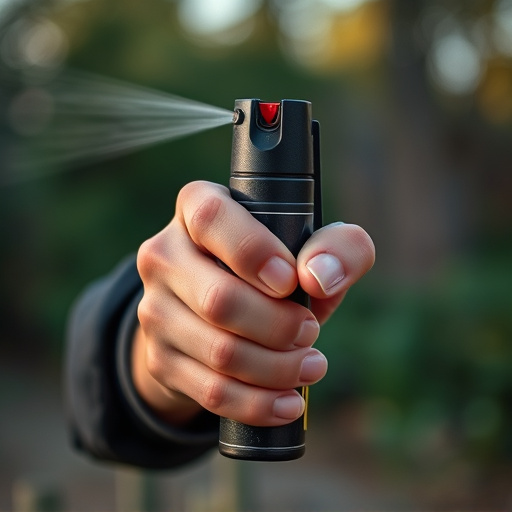Pepper spray, with its capsaicin-based formula, is a popular civilian self-defense tool whose effectiveness depends on concentration and deployment distance. The recommended range for maximum impact is 2-3 meters, though modern devices can extend this to 5 meters. Accuracy is critical within these distances; tactical nozzles and pulse activation mechanisms enhance precision. Legal regulations and best practices, including proper training, hand placement, aiming points, wind direction awareness, maintenance, and expiration date checks, are essential for safe and effective use of pepper spray while minimizing harm to others.
Defensive spray has emerged as a powerful tool for civilian protection, offering a non-lethal means of deterring potential threats. This comprehensive guide explores the intricacies of effective pepper spray deployment distance and range. We’ll delve into the basic workings of this potent self-defense mechanism, analyze factors that impact its accuracy and reach, and navigate the legal considerations surrounding its use. By understanding these key aspects, civilians can make informed decisions and enhance their personal safety effectively.
- Understanding Pepper Spray: The Basics of Active Ingredient and Safety
- Factors Influencing Effective Deployment Distance: Range and Accuracy
- Legal Considerations and Best Practices for Civilian Pepper Spray Use
Understanding Pepper Spray: The Basics of Active Ingredient and Safety
Pepper spray, a non-lethal self-defence tool, has become an increasingly popular option for civilians seeking protection against potential threats. At its core, pepper spray works by delivering a potent blend of capsaicin, the active ingredient derived from chili peppers, into the eyes and respiratory system of an aggressor. This irritant causes temporary disorientation, reduced visibility, and difficulty breathing, providing users with valuable time to escape or seek help.
The effectiveness of pepper spray depends on several factors, with one of the most crucial being the active ingredient concentration. Higher concentrations offer longer effective deployment distances, ensuring users can maintain a safe range from potential attackers. Safety is paramount when considering pepper spray; proper training in its use is essential to ensure responsible and effective application, minimising harm to bystanders and maximizing the spray’s impact on the intended target.
Factors Influencing Effective Deployment Distance: Range and Accuracy
The effective deployment distance of defensive spray is influenced by two primary factors: range and accuracy. The range refers to the maximum distance at which the spray can be effectively deployed, ensuring it reaches the intended target while minimizing exposure for the user. Pepper spray, for instance, typically has a recommended range of 2-3 meters (6-10 feet), beyond which its effectiveness decreases significantly. This is because pepper spray particles need to make physical contact with the eyes and respiratory tract to induce incapacitation.
Accuracy plays a crucial role in determining the successful deployment of defensive spray. Even if the user has a good range, poorly aimed spray might not achieve the desired effect. The design of the spray device, including its nozzle and actuation mechanism, can impact accuracy. Some modern pepper spray devices are designed with advanced features like tactical nozzles and pulse-activation mechanisms to improve accuracy, thereby enhancing the overall effectiveness within the specified deployment distance.
Legal Considerations and Best Practices for Civilian Pepper Spray Use
When considering defensive spray for civilian protection, it’s crucial to understand legal considerations and best practices. Each jurisdiction has its own regulations regarding the possession, carrying, and use of pepper spray, so understanding local laws is essential before purchasing or using any self-defense tool. Authorities often specify the effective pepper spray deployment distance range, which typically ranges from 2 to 5 meters (6 to 15 feet), ensuring users have a clear line of sight and can deploy the spray safely without risking harm to bystanders.
Best practices for civilian pepper spray use include training and familiarization with the device, proper hand placement, aiming at facial nerve endings, and following up with a second burst if necessary. Users should also be aware of wind direction and potential environmental factors that could affect spray dispersion. Additionally, maintaining the spray in a secure, readily accessible location and ensuring regular maintenance and expiration date checks are vital to ensure its effectiveness when needed.
When it comes to civilian protective measures, understanding the effective pepper spray deployment distance is paramount. Factors like range and accuracy play a significant role in ensuring safety and legality. By adhering to best practices and considering legal implications, individuals can make informed decisions regarding the use of pepper spray for personal protection. Knowing your rights and the capabilities of your chosen product is crucial in potentially neutralizing threats effectively at an optimal distance.
